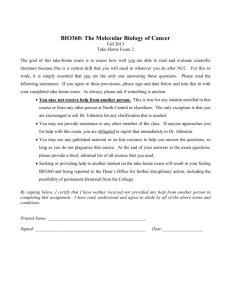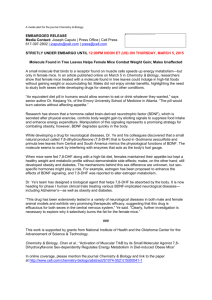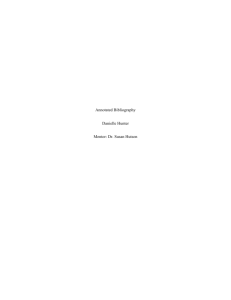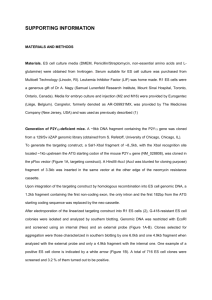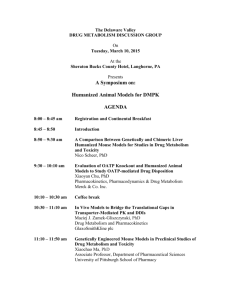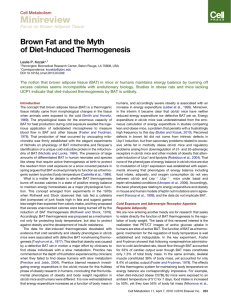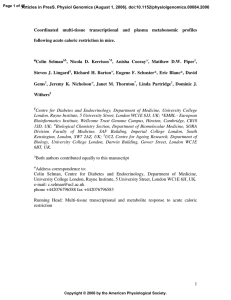notes
advertisement
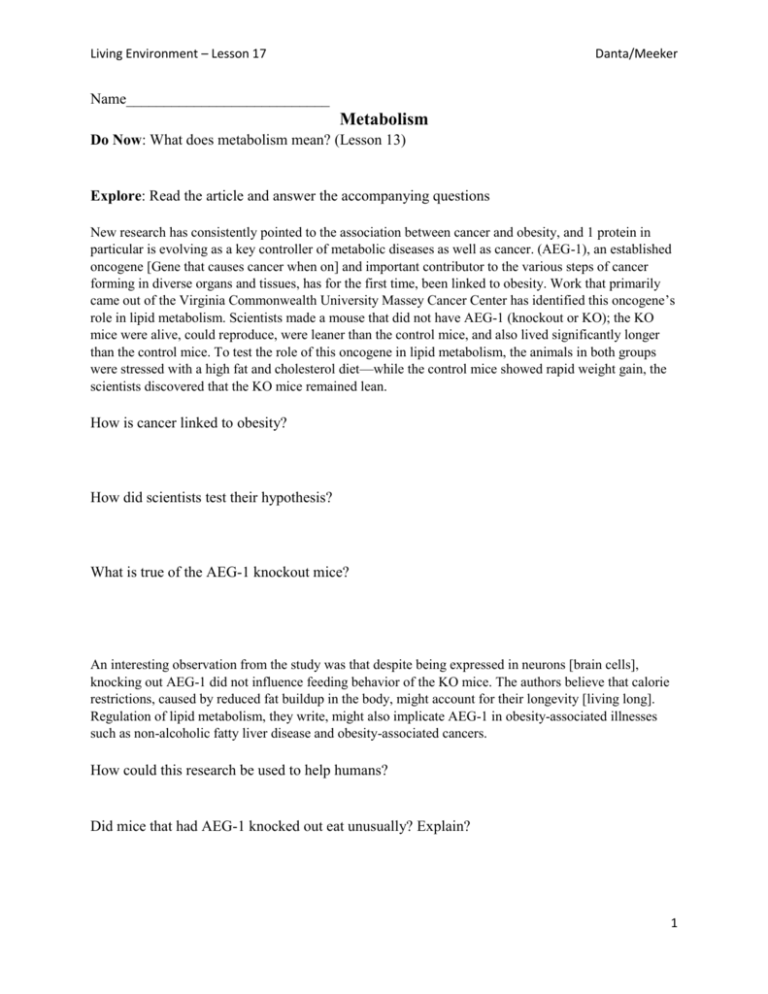
Living Environment – Lesson 17 Danta/Meeker Name___________________________ Metabolism Do Now: What does metabolism mean? (Lesson 13) Explore: Read the article and answer the accompanying questions New research has consistently pointed to the association between cancer and obesity, and 1 protein in particular is evolving as a key controller of metabolic diseases as well as cancer. (AEG-1), an established oncogene [Gene that causes cancer when on] and important contributor to the various steps of cancer forming in diverse organs and tissues, has for the first time, been linked to obesity. Work that primarily came out of the Virginia Commonwealth University Massey Cancer Center has identified this oncogene’s role in lipid metabolism. Scientists made a mouse that did not have AEG-1 (knockout or KO); the KO mice were alive, could reproduce, were leaner than the control mice, and also lived significantly longer than the control mice. To test the role of this oncogene in lipid metabolism, the animals in both groups were stressed with a high fat and cholesterol diet—while the control mice showed rapid weight gain, the scientists discovered that the KO mice remained lean. How is cancer linked to obesity? How did scientists test their hypothesis? What is true of the AEG-1 knockout mice? An interesting observation from the study was that despite being expressed in neurons [brain cells], knocking out AEG-1 did not influence feeding behavior of the KO mice. The authors believe that calorie restrictions, caused by reduced fat buildup in the body, might account for their longevity [living long]. Regulation of lipid metabolism, they write, might also implicate AEG-1 in obesity-associated illnesses such as non-alcoholic fatty liver disease and obesity-associated cancers. How could this research be used to help humans? Did mice that had AEG-1 knocked out eat unusually? Explain? 1 Living Environment – Lesson 17 Danta/Meeker Metabolism=Any ____________________ in a living ____________________ Convert stuff from ___________________ into ______________________ How we maintain ______________________: _________________________ Two major examples: _________________ and __________________ Digestion: Break down of _________________ into _________________________ Allows __________________ to move around __________________ We break down _____________________ into _____________________ Some people take laxatives to lose weight Explain why this could be dangerous Synthesis: Combining _________________ to make more complex ones We build _________________ from simple _____________________ Happens ______________________ Going from ____________ to _________________ How could Lego bricks be a metaphor for (similar to) digestion and synthesis? Autotrophic Auto = ____________________, trophic = feeding/nutrition __________________ organic molecule from stuff available Example: _____________ doing _______________________ Heterotrophic: Hetero= _________________, trophic=feeding/nutrition ________________ other organisms to _______________________ Does ___________________ then ____________________ Example: _____________________ Metabolism and life Our body is constantly _________________ to keep things ______________________ We ___________________ and _________________ waste Parasites use _____________________ to _____________________ what they need 2 Living Environment – Lesson 17 Danta/Meeker How do you build muscle? In your answer describe what type of organic molecule makes them up (lesson 16) and what processes cause it? 3

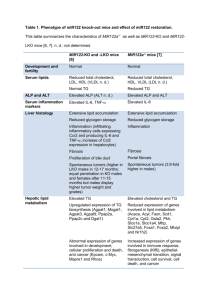
![Historical_politcal_background_(intro)[1]](http://s2.studylib.net/store/data/005222460_1-479b8dcb7799e13bea2e28f4fa4bf82a-300x300.png)

